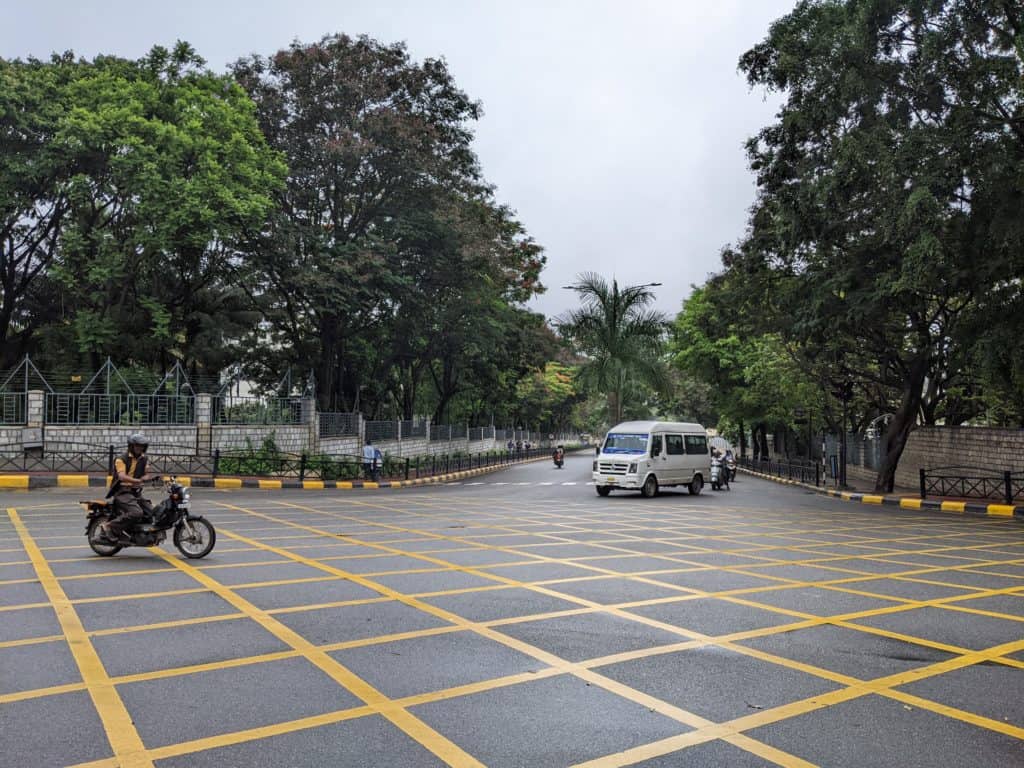Countless promises and mere lipservice display the lack of political will to tackle the mammoth problem of pothole-ridden roads in Bengaluru, even as several reports highlight the spike in fatality caused by them.
Citizen Matters on November 18th hosted a Twitter Spaces, titled ‘What will it take to make Bengaluru free of potholes?’, where several civic leaders voiced their discontent when it came to road management in Bengaluru and offered solutions and avenues for civic action.
Vaidya R, who traced the road management by the Electronics City Industrial Township Authority (ELCITA) which yielded peak road and pothole-free roads, highlighted the construction guidelines that clearly state the approach that Bruhat Bengaluru Mahanagara Palike (BBMP) needs to undertake during road-laying.

“The first layer has to be packed well with rocks, the second layer should be a wet mix and then the last layer of asphalting has to be five centimetres thick,” he said, referring to the aforementioned guidelines by KN Shiva Shankar Rao, a retired Chief Engineer at the state Public Works Department. However, this process is diluted due to rampant corruption and negligence, resulting in crumbling roads and potholes.
Raghu Rajagopal, a citizen activist from Koramangala 4th block Residents’ Welfare Association, also said it is important that the level of the roads should not be higher than the footpath.
While outlining general observations, Vijayan Menon, President of Citizens Action Forum (CAF), said that in terms of Bengaluru’s road infrastructure neither the physical civil engineering aspect nor the governance prospect is up to the mark.
Road infrastructure the real problem
There were several reports on how the traffic police surveyed and identified the number of potholes to be filled, giving the municipal body a target and a deadline to do so.
Raghu believes this is a frivolous exercise. “We need to stop talking about potholes and start talking about the road infrastructure. It is better to track the quality of the road than the number of potholes,” he said. This can be done by categorising the roads across the city into bad or extremely bad roads.
Stressing the need for ward-level understanding, Raghu said the ward committees have the monitoring capability which allows them to monitor the revenue earmarked for road management. “We need a road quality plan at the ward level, which will identify roads that are pothole-ridden,” he said, which makes it easier for citizen and civic leaders to track the quality of infrastructure.
Read more: Bengaluru’s potholes cost lives and money, but here’s how you can hold BBMP accountable
Lack of accountability, coordination
The speakers laid emphasis on how decentralised management when it comes to potholes, is the best way ahead. Srinivas Alavilli, a citizen activist and the Head of Civic Participation, at the NGO Janaagraha, believes that the fundamental problem is accountability. “There is a lack of an institutional mechanism that arms ward committees with enough data, information and budget to tackle this,” he said.

Attesting to the routine digging up of roads, all the speakers agreed that there was a severe lack of cooperation or coordination among the parastatals. For instance, the Karnataka Power Transmission Corporation Ltd’s plans are not in sync with that of the Bengaluru Water Supply and Sewerage Board (BWSSB) or Bengaluru Electricity Supply Company Ltd. (BESCOM). “Why don’t we know the respective five-year plans that these civic bodies have for road-based operations?” Vijayan questioned, adding that with a utility mapping exercise, one can ensure that all plans of respective civic agencies are in tandem with each other.
Read more: “Revamp the entire system of road repairs – Why wait for rains?”
Multiple permissions for operating on the same stretch of the road threaten the stability of the road, according to the speakers. “While there is enough technical information on what needs to be done, there is a lack of a governance system that enables the monitoring of laying, re-laying of roads and fixing potholes,” said Vijayan.
Weakening of the BBMP
“We need to fight to strengthen the BBMP and the structure of civic governance, that the BBMP Act, 2020 has chipped away at,” said Raghu. Srinivas said that while the Act has flaws, it has led to the appointment of zonal-level Commissioners and Joint Commissioners. “This is positive because ward committees are convened by these Commissioners,” he said. This added layer of decentralisation is bound to work towards holding officials accountable for poor performances.

Raghu believes there has been a steady reinforcement of unconstitutional methods of governance where the Members of the Legislative Assembly are involved in taking decisions or wielding more power than democratically elected Corporators.
In terms of compensation being paid to people who have lost their lives due to pothole-related accidents, Vijayan talks about the necessity of a foolproof system where civil society organisations (CSOs) can rally behind such victims and ensure they are compensated. “While courts can order compensation, they cannot set up committees to ensure it,” he said, adding how the CSOs can step in as a supporting mechanism.
The discussion also progressed to the audience expressing the need to scale up the ELCITA model and deploy this across the city. As a concluding remark, speakers agreed that participatory governance is fundamental in addressing the discussed issues.